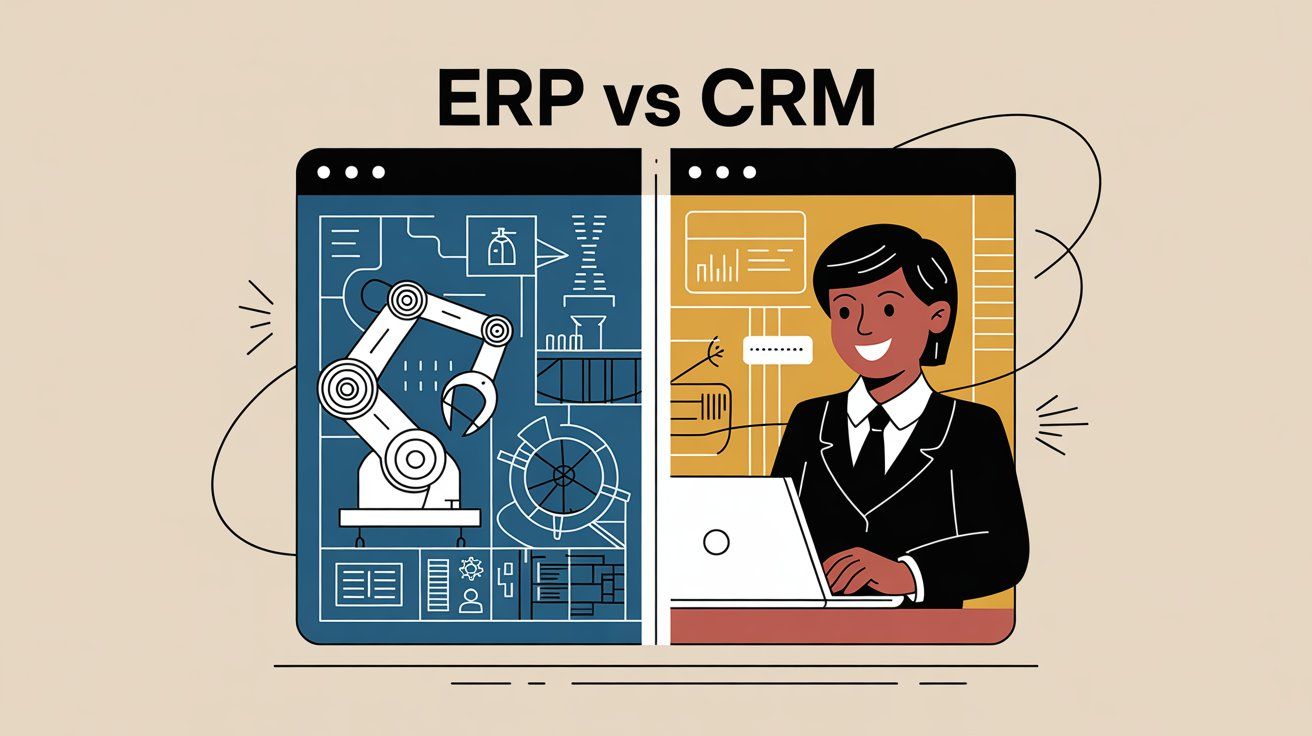
ERP vs CRM: Key Differences, Benefits & More (2025)
Discuss with AI
Get instant insights and ask questions about this topic with AI assistants.
💡 Pro tip: All options include context about this blog post. Feel free to modify the prompt to ask more specific questions!
TL;DR: CRM drives revenue by managing customer relationships, while ERP cuts costs by streamlining operations. Most growing businesses need both. Smart messaging automation tools like Spur help bridge that gap by turning customer conversations into actionable data.
Running a business today means juggling countless moving parts. You've got sales leads coming through WhatsApp, Instagram DMs piling up, orders flowing in, inventory to track, and finances to manage. Two types of software systems promise to make this chaos manageable: CRM (Customer Relationship Management) and ERP (Enterprise Resource Planning).
Everyone wants to know which one they actually need.
The simple truth: CRM focuses on your customer-facing activities (sales, marketing, support), while ERP handles your internal operations (accounting, inventory, HR, production). Think of it as front-office versus back-office.
CRM helps you win customers and keep them happy. ERP helps you run an efficient business behind the scenes. But honestly? Most businesses eventually need both. The key is understanding which to prioritize first based on your biggest pain points.
This guide breaks down everything you need to know about CRM versus ERP, their key differences, and how to choose the right solution for your business. By the end, you'll know exactly which system (or combination) will deliver the highest return on investment for your situation.
A Customer Relationship Management (CRM) system centralizes all your customer information in one place. Instead of having customer details scattered across emails, spreadsheets, and sticky notes, a CRM becomes your single source of truth for every customer interaction.
Modern CRMs go way beyond simple contact management. They've evolved into comprehensive platforms that handle sales, marketing, customer support, and even social media engagement. The goal? Give your team a complete 360-degree view of every customer so they can deliver personalized, responsive service.
Contact & Lead Management
Your CRM becomes the central database for every prospect and customer. It tracks conversation history, purchase records, and preferences so nothing falls through the cracks. When a sales rep picks up a lead, they instantly see every previous interaction.
Sales Automation
CRMs eliminate repetitive tasks that slow down your sales team. They automatically log emails, schedule follow-ups, and update pipeline stages. This frees up your reps to focus on actually building relationships instead of data entry.
Marketing & Campaign Management
Most CRMs include email marketing, campaign tracking, and lead nurturing workflows. You can set up drip campaigns, track open rates, and see which marketing automation strategies actually generate sales.
Customer Support Tools
Modern CRMs include helpdesk features like ticket management and support queues. Your support team can see a customer's complete history (every purchase, previous issues, and ongoing conversations) before they even pick up the phone.
Multi-Channel Communication
This is where things get interesting. The best CRMs integrate with messaging channels like WhatsApp, Instagram, and live chat. For example, integrating WhatsApp with your CRM pulls all customer conversations into one organized system, turning scattered chats into structured, actionable data.
Analytics & Reporting
CRMs provide insights into sales performance, customer behavior, and marketing effectiveness. You can see which campaigns generate the most leads, track conversion rates by source, and identify your most valuable customers.
Companies using CRMs are 86% more likely to exceed their sales goals compared to those relying on spreadsheets and manual processes.
Why? Because centralized customer data enables faster response times, more personalized service, and fewer missed opportunities. Think about it: When a potential customer sends a message on Instagram, wouldn't you want that conversation to automatically sync with their purchase history and previous support tickets? That's the power of a well-implemented CRM.
An Enterprise Resource Planning (ERP) system is your business's operational backbone. While CRM handles customer relationships, ERP manages everything that happens behind the scenes to keep your business running smoothly.
ERP software integrates all your core business functions (accounting, inventory, procurement, HR, production) into one unified platform. Instead of each department working in isolation with their own tools, ERP creates a single source of truth where data flows automatically between systems.
Picture this scenario: A customer places an order through your online store.
In an integrated ERP system, that order automatically:
① Updates inventory levels
② Triggers a purchase order if stock is low
③ Generates an invoice
④ Updates financial records
⑤ Notifies the shipping department
⑥ Sends tracking info to the customer
All without manual intervention.
Function | What It Does | Business Impact |
|---|---|---|
Financial Management | Centralizes accounting, budgeting, and reporting | Real-time financial visibility |
Inventory & Supply Chain | Tracks stock and manages suppliers | Automatic reordering, optimized purchasing |
Production & Manufacturing | Coordinates schedules with materials | Improved production efficiency |
Human Resources | Manages payroll, timesheets, benefits | Direct labor cost integration |
Order Management | Tracks complete order lifecycle | Synchronized departments |
Process Automation | Reduced manual errors |
ERP systems primarily impact your bottom line by reducing costs and improving operational efficiency. They eliminate duplicate data entry, reduce manual errors, and give management real-time visibility into business performance.
The result? Companies typically see:
• 20-30% reduction in operational costs
• 50% faster order processing
• 25% improvement in inventory turns
• 99% accuracy in financial reporting
Aspect | CRM | ERP |
|---|---|---|
Primary Focus | Customer relationships & revenue growth | Internal operations & efficiency |
Main Users | Sales, marketing, customer support teams | Finance, operations, inventory, HR, management |
Business Impact | Increases top-line revenue | Reduces bottom-line costs |
Data Managed | Customer interactions, leads, campaigns | Financial records, inventory, orders, employee data |
Key Processes | Lead management, sales pipelines, support tickets | Order fulfillment, accounting, procurement, production |
CRM is your front-office solution. It manages customer-facing activities (sales, marketing, and support). Every feature focuses on acquiring customers, nurturing relationships, and driving revenue growth.
ERP is your back-office engine. It handles internal operations like accounting, inventory management, and production planning. Every feature aims to streamline processes, reduce costs, and improve operational efficiency.
CRM success is measured by revenue metrics:
• Lead conversion rates (how many leads become customers)
• Sales cycle length (time from first contact to close)
• Customer lifetime value (total revenue per customer)
• Support response times (speed of resolution)
• Customer satisfaction scores (happiness metrics)
ERP success is measured by efficiency metrics:
→ Order processing time (hours to days reduction)
→ Inventory turnover (stock optimization)
→ Cost per transaction (automation savings)
→ Production throughput (units per hour)
→ Financial reporting accuracy (error reduction)
Implementing a CRM primarily affects your top line (it helps you sell more and serve customers better, directly increasing revenue).
Implementing an ERP primarily affects your bottom line (it reduces waste, automates manual work, and cuts operational costs).
Important insight: Neither is inherently "better" than the other. They solve different problems. The right choice depends on whether your biggest challenges are customer-related or operations-related.
Despite their different focuses, CRM and ERP systems share several important characteristics:
Both systems eliminate information silos by creating single sources of truth. Instead of hunting for data across spreadsheets and disparate systems, everything lives in one organized database.
Modern CRM and ERP systems provide up-to-the-minute updates. When something changes (whether it's a new customer inquiry or a received shipment), all relevant teams see the update immediately.
Both platforms excel at automating repetitive tasks. CRMs automate customer-facing workflows (like welcome sequences or lead assignments), while ERPs automate internal processes (like reordering inventory or processing payroll).
Each system provides detailed reporting and analytics within their domain. CRMs report on sales performance and customer behavior, while ERPs track operational metrics and financial KPIs.
The most powerful implementations connect CRM and ERP systems so data flows seamlessly between customer-facing and operational functions. When these systems work together, you get a complete view of your business from customer acquisition through order fulfillment.
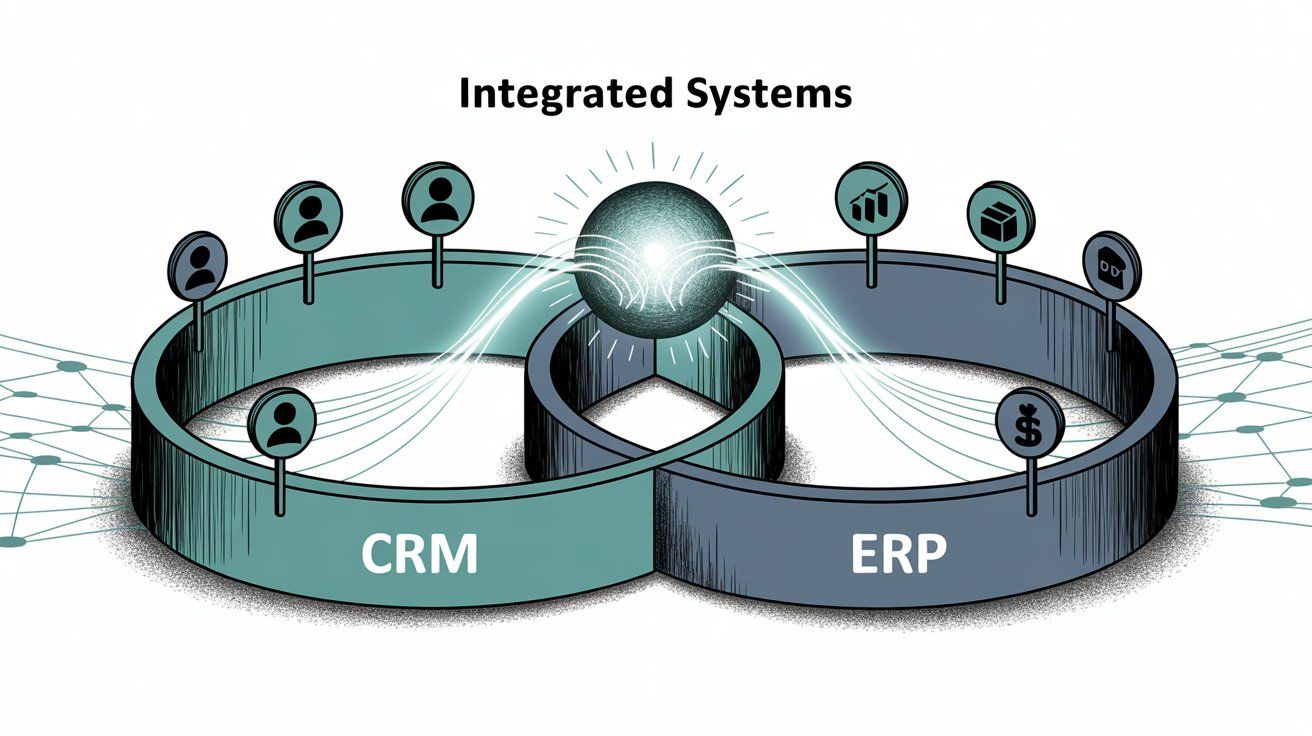
The decision comes down to understanding your biggest pain points and priorities. Here's a practical framework:
Choose CRM first if you're struggling with:
• Disorganized customer information
• Slow response times to inquiries
• Difficulty tracking leads through your sales process
• Poor visibility into marketing campaign performance
• Inconsistent customer service experiences
• Managing conversations across multiple channels (WhatsApp, Instagram, email, etc.)
For businesses with these challenges, tools like Spur can be particularly valuable because they combine CRM functionality with advanced messaging automation across WhatsApp, Instagram, and live chat. All with AI agents trained on your specific business data.
Choose ERP first if you're struggling with:
① Disconnected financial systems and reporting delays
② Inventory management chaos (stockouts or overstock)
③ Manual, error-prone order processing
④ Difficulty tracking costs and profitability
⑤ Time-consuming month-end closing processes
⑥ Poor visibility into operational performance
Business Type | Typical First Priority | Why |
|---|---|---|
Small businesses/startups | CRM | Focus on growth and customer acquisition |
Established complex operations | ERP | Need operational efficiency at scale |
Service businesses | CRM | Success depends on relationships |
Manufacturing/distribution | ERP | Complex supply chains need management |
Here's where modern businesses get smart: instead of choosing between CRM and ERP, they choose systems that work together seamlessly.
Integrated suites provide both CRM and ERP functionality in one platform. This ensures data consistency and eliminates the need to connect separate systems.
Best-of-breed approach involves selecting the best CRM and best ERP for your needs, then integrating them. This often provides more powerful functionality in each area but requires more technical setup.
Phased implementation is common and practical. Many businesses start with the system that addresses their most urgent need, then add the other system later. The key is planning for integration from the beginning.
Here's something many businesses overlook: the line between CRM and operational systems is blurring, especially when it comes to customer communication.
Traditional CRM thinking: Capture customer data, then have humans respond to inquiries.
Modern reality: AI agents can handle routine customer interactions, access real-time business data, and take actions like tracking orders or booking appointments. All automatically.
This is where platforms like Spur become interesting. They're not just CRMs that store customer data. They're actionable AI platforms.
What makes them different:
• Train AI agents on your specific business knowledge base (unlike basic chatbots)
• Handle customer support across WhatsApp, Instagram, Facebook, and live chat
• Automatically track orders, update customer records, and book appointments
• Route complex issues to human agents with full context
• Manage marketing automation and abandoned cart recovery
The competitive advantage?
Traditional tools often lack advanced AI training capabilities or comprehensive multi-channel automation. Spur combines both in a user-friendly platform that doesn't require technical expertise.
This matters because modern customers expect instant responses across multiple channels. If someone messages you on WhatsApp at midnight about their order status, they don't want to wait for business hours. An AI agent that can instantly access your ERP data and provide accurate updates creates a better experience than traditional CRM follow-up workflows.
If customer management is your bottleneck: Start with a CRM that includes messaging automation. Focus on centralizing customer conversations and implementing AI agents for routine inquiries.
If operational chaos is holding you back: Prioritize ERP to get your internal processes under control. Once operations run smoothly, add CRM capabilities to fuel growth.
Even if you're implementing just one system initially, choose platforms that play well with others.
Ask potential vendors:
• How easily does this integrate with other business systems?
• What APIs and pre-built connectors are available?
• Can data flow automatically between systems?
• How will adding another system later affect Spur's current setup?
Don't get locked into traditional thinking. Some modern platforms blur the lines between CRM and ERP by focusing on specific business processes.
For example, Spur handles customer relationship management, marketing automation, and operational tasks like order tracking. All through conversational AI. This can be more powerful than a traditional CRM for businesses that primarily interact with customers through messaging channels.
System | ROI Indicators | Typical Timeline |
|---|---|---|
CRM | • Faster response times | 3-6 months |
ERP | • Reduced manual entry | 6-18 months |
Choose the system where you can measure clear improvement in these metrics within 90 days.
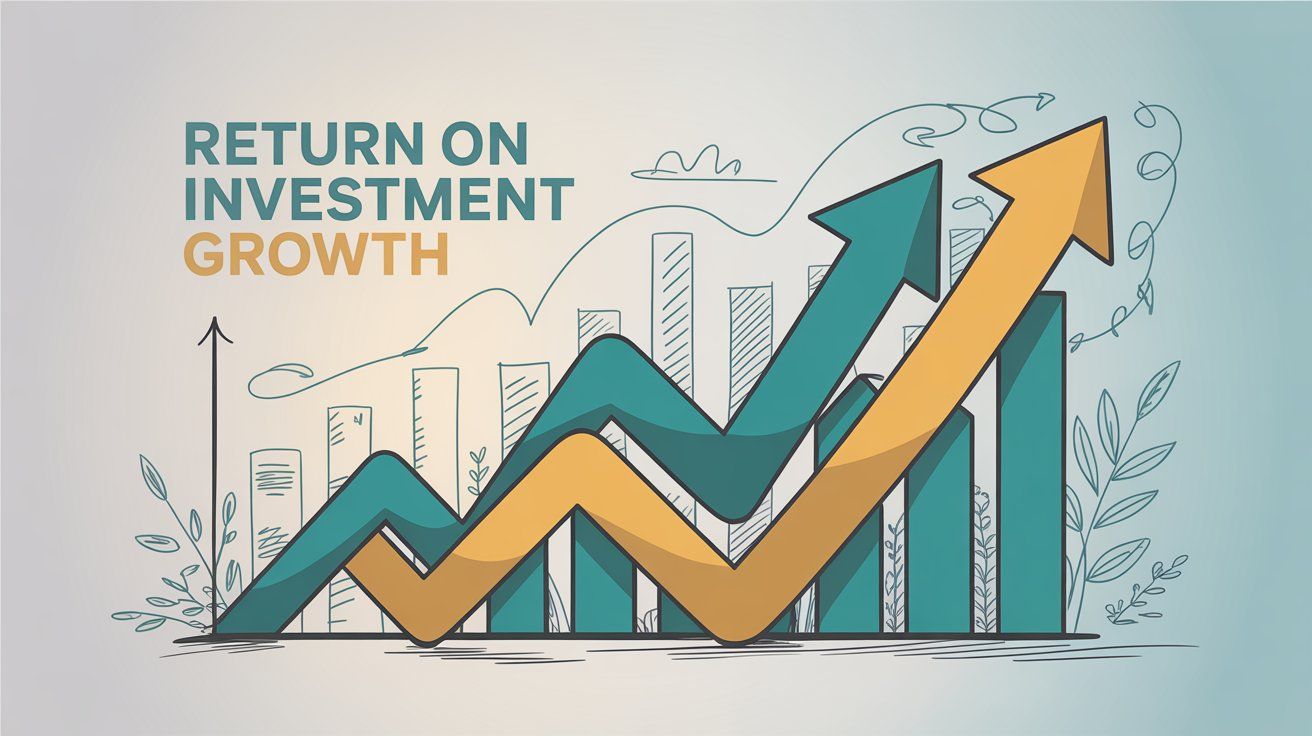
A growing online retailer might use:
CRM side: Spur handles customer conversations across WhatsApp and Instagram, with AI agents providing instant order updates and handling returns. Marketing automation runs abandoned cart campaigns.
ERP side: A system like NetSuite manages inventory, accounting, and fulfillment operations.
Integration: When a customer asks about their order via WhatsApp, Spur's AI agent instantly accesses real-time shipping data from the ERP and provides accurate updates. When someone completes a purchase, the ERP automatically triggers personalized follow-up sequences in the messaging platform.
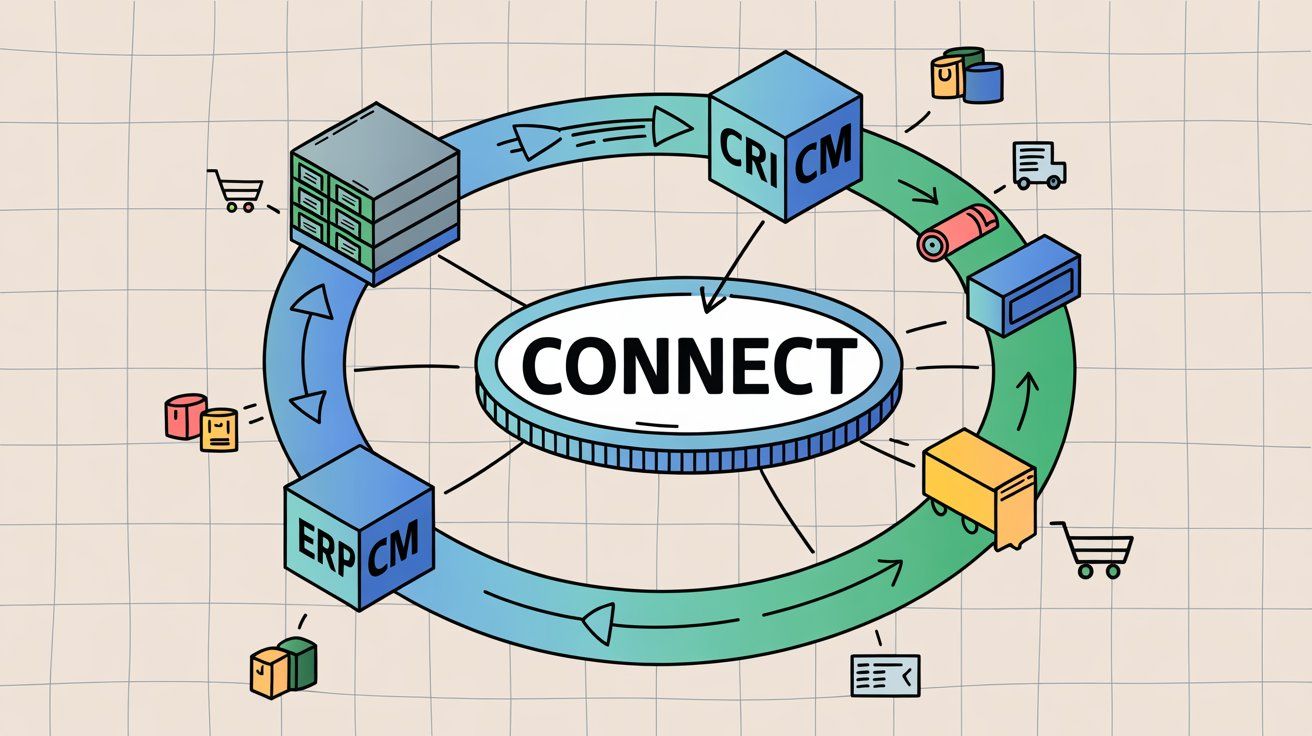
A consulting firm might prioritize:
CRM first: A system that manages lead tracking, client communications, and project status updates. They need visibility into their sales pipeline and client relationship history.
ERP later: As they grow, they add systems for project accounting, resource planning, and financial management to handle increasing operational complexity.
A manufacturer needs:
ERP foundation: Managing production schedules, inventory, supplier relationships, and complex accounting.
CRM overlay: Managing customer relationships, tracking sales opportunities, and handling customer service inquiries about order status.
The magic happens when these systems connect. Sales data informs production forecasts, while real-time inventory levels help sales teams set accurate delivery expectations.
• Can your AI agents be trained on Spur's specific business data and processes?
• How do you handle multi-channel customer conversations?
• What's your approach to marketing automation across messaging platforms?
• How easily does this integrate with existing business systems?
• Can customers get real-time information (order status, inventory, etc.) without human intervention?
① How quickly can we see ROI from implementation?
② What's your track record with businesses our size in our industry?
③ How does your system handle integration with customer-facing platforms?
④ What kind of training and support do you provide during implementation?
⑤ Can we start with core modules and add functionality over time?
For any system:
• Vendors who don't ask detailed questions about your specific business processes
• Solutions that require extensive customization to meet basic needs
• Platforms that don't offer modern integration capabilities
• Companies without clear implementation methodology and support plans
The business software landscape is evolving rapidly. Here's what to consider for long-term success:
Modern systems increasingly include AI capabilities for predictive analytics, automated workflows, and intelligent customer interactions. Choose platforms that are actively investing in AI rather than treating it as an add-on feature.
Your team needs access to customer and business data from anywhere. Prioritize solutions with strong mobile capabilities and offline functionality.
The best systems today act as platforms that connect with hundreds of other business tools. Look for vendors with robust app marketplaces and developer communities.
Choose systems that can grow with your business without requiring complete replacements. This means considering not just current needs but where you want to be in three to five years.
Step 1: List your top three business challenges right now.
Step 2: Categorize each as customer-related or operations-related.
Step 3: Choose the system type (CRM or ERP) that addresses the majority of your critical issues.
Step 4: Research solutions that excel in your priority area but can also integrate with systems for your other needs.
Step 5: Test before committing. Most vendors offer trials or demos that let you evaluate real-world fit.
System Type | Typical Cost Range | Implementation Time | ROI Timeline |
|---|---|---|---|
CRM | $20-100+ per user/month | 1-3 months basic, 6 months full | 3-6 months |
ERP | Higher upfront + ongoing | 3-12 months depending on complexity | 12-24 months |
Integrated | Varies by vendor | Faster than separate systems | 6-12 months |
If your analysis shows you need both CRM and ERP capabilities:
Go integrated if:
• You want faster implementation
• You prefer working with one vendor
• You value data consistency over best-in-class features
• You have limited IT resources for managing integrations
Go best-of-breed if:
→ You need advanced capabilities in both areas
→ You have specific industry requirements
→ You have technical resources to manage integrations
→ You want flexibility to change systems independently
The CRM vs ERP question isn't really about choosing sides. It's about understanding your business priorities and building the right technology foundation for sustainable growth.
CRM excels at revenue generation. It helps you attract customers, convert leads, and deliver exceptional service that drives loyalty and referrals. If your biggest challenge is growing sales or managing customer relationships, start here.
ERP excels at operational efficiency. It streamlines internal processes, reduces costs, and provides the operational foundation needed to scale. If complexity is holding your business back, prioritize this first.
The best businesses use both systems working together. When customer data flows seamlessly to operational systems, and operational data enhances customer interactions, you create competitive advantages that are hard to replicate.
Modern platforms are changing the game. Tools like Spur demonstrate how AI-powered customer engagement can bridge traditional CRM and operational functions, especially for businesses that rely heavily on messaging channels like WhatsApp and Instagram.
① Audit your current pain points (Are they customer-related or operations-related?)
② Calculate potential ROI (Where can technology have the biggest immediate impact?)
③ Research integration options (Even if you start with one system, plan for connecting others later.)
④ Test before committing (Take advantage of free trials to see how systems work with your actual business processes.)
⑤ Plan for growth (Choose systems that can scale with your business rather than requiring replacement as you expand.)
Remember: the right system is the one that solves your most pressing problems while positioning you for future growth. Whether that's a CRM, an ERP, or an integrated platform that combines both, success comes from matching the solution to your specific business needs.
The businesses that thrive in today's market are those that can serve customers excellently and operate efficiently. Your technology choices should support both goals, creating a foundation for sustainable, profitable growth.
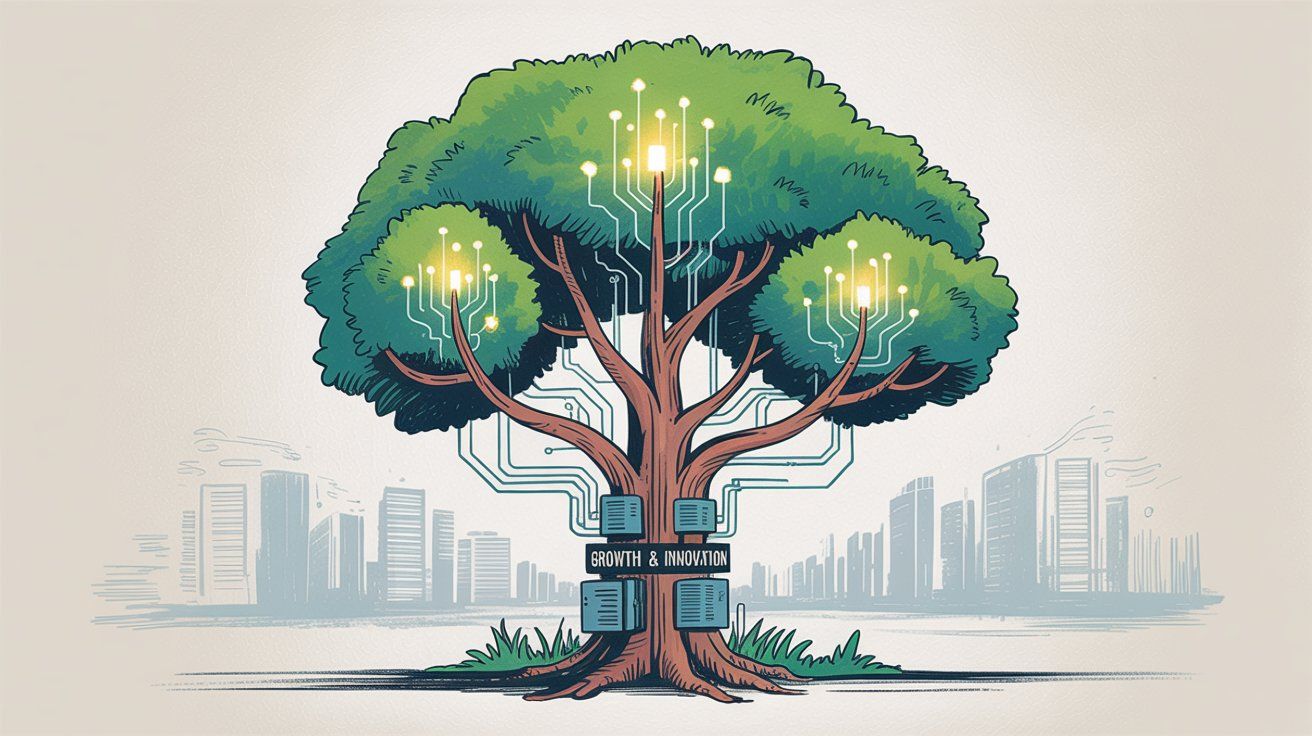
Absolutely. While ERPs have traditionally been seen as enterprise-only solutions, cloud-based ERPs now offer scalable options for small businesses. The key is starting with core modules (like accounting and inventory) and adding functionality as you grow. Many small manufacturers, distributors, and service companies find that ERP helps them operate more professionally and scale more efficiently.
CRM implementation usually takes 1-3 months for basic functionality, with full adoption happening within 6 months. Modern cloud-based CRMs can often be up and running within weeks.
ERP implementation is typically more complex, ranging from 3-12 months depending on your business complexity and chosen modules. The key is phased implementation. Start with core functions and gradually add capabilities.
Most modern CRM and ERP systems include data migration tools and services.
The process typically involves:
• Exporting data from current systems
• Cleaning and formatting data for the new system
• Testing the migration with sample data
• Full migration during a planned transition period
• Validation to ensure data integrity
Important: Plan for data migration early in your evaluation process. Some data formats are easier to migrate than others.
CRM systems are generally designed for business users and require minimal technical expertise. Platforms like Spur emphasize user-friendly interfaces that don't require coding knowledge.
ERP systems may require more technical involvement, especially for complex customizations or integrations. But cloud-based ERPs have significantly reduced the technical burden compared to traditional on-premise solutions.
Best practice: Choose vendors that provide comprehensive training and support, regardless of your technical background.
Time for CRM when:
• You're managing more than 100 customer contacts
• Sales team members can't access complete customer history
• You're losing leads due to poor follow-up
• Customer service lacks context about previous interactions
• You need to track marketing campaign effectiveness
Time for ERP when:
→ Financial reporting takes days instead of hours
→ You frequently have inventory shortages or overstock
→ Order processing involves multiple manual steps
→ You can't easily track costs and profitability
→ Different departments have conflicting data about the same transactions

Modern systems emphasize integration. Most offer:
• Pre-built connectors for popular business tools
• API access for custom integrations
• Zapier/automation platform support for easy workflow connections
• Import/export capabilities for data exchange
Before choosing any system: Make a list of your current tools and confirm integration options during the evaluation process.
CRM ROI can often be seen within 3-6 months through:
• Improved lead conversion rates
• Faster customer response times
• Better customer retention
• More effective marketing campaigns
ERP ROI typically takes 6-18 months but can be substantial:
• Reduced manual labor costs
• Fewer errors and rework
• Better inventory optimization
• Improved financial controls
Key insight: Both systems often pay for themselves, but through different mechanisms and timelines.
Cloud-based systems offer:
• Lower upfront costs
• Faster implementation
• Automatic updates and maintenance
• Better mobile access
• Easier integration with other cloud tools
On-premise systems offer:
• Complete data control
• Customization flexibility
• No ongoing subscription costs (after initial purchase)
• Potentially better performance for specific use cases
Modern recommendation: Unless you have specific regulatory requirements or technical constraints, cloud-based systems typically offer better value and flexibility for most businesses.
Successful training strategies:
• Start with champions (Identify enthusiastic early adopters who can help train others)
• Use real data (Train with actual customer and business data, not generic examples)
• Focus on daily workflows (Show how the system improves their specific job tasks)
• Provide ongoing support (Plan for questions and challenges after initial training)
• Measure adoption (Track system usage and provide additional help where needed)
Most vendors provide training resources, but internal champions often drive the highest adoption rates.
Minimize risk by:
• Taking advantage of free trials and demos
• Starting with pilot implementations
• Choosing vendors with good reputations and support
• Planning integrations that allow for future system changes
If you do need to switch: Modern cloud systems make it easier to migrate data and change platforms compared to traditional software. The key is not letting a poor fit continue too long. Address issues quickly rather than hoping they'll resolve themselves.
